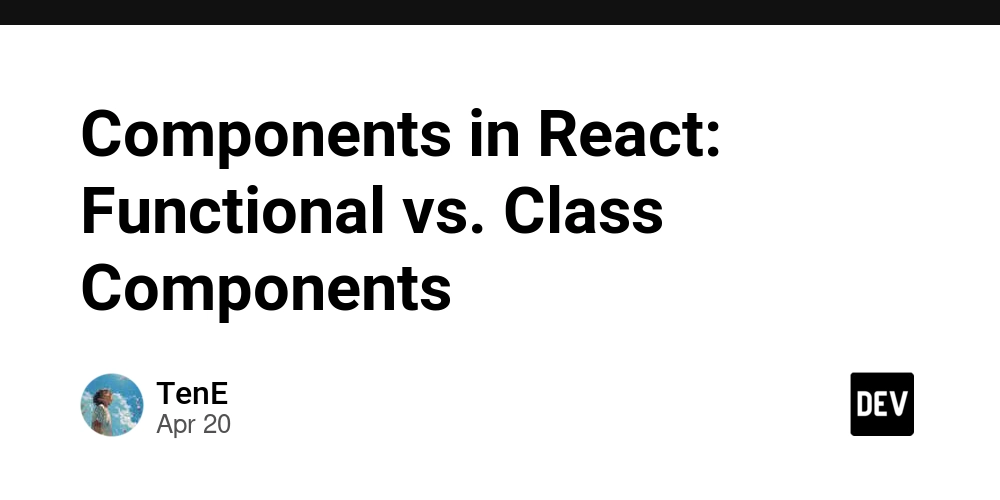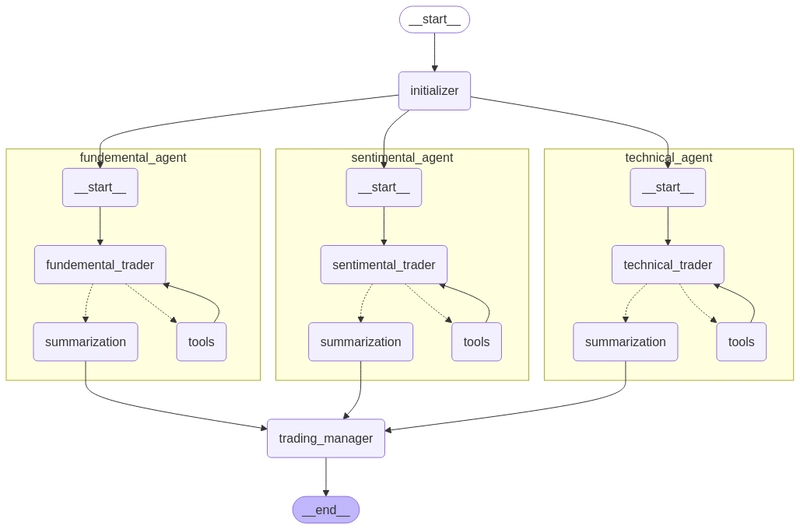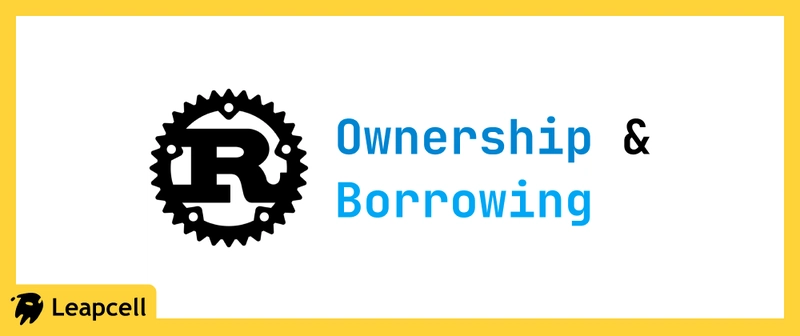Components in React: Functional vs. Class Components
What are React Components? React components are reusable building blocks for UI. They allow you to break down a UI into smaller, independent pieces. Types of Components in React React has two types of components: Functional Components (Modern, recommended) Class Components (Older) 1. Functional Components (Recommended) Functional components are JavaScript functions that return JSX. Example of a Functional Component: function Greeting() { return Hello, React!; } export default Greeting; Why Use Functional Components? Simpler and easier to read No need for this keyword Hooks (useState, useEffect) work only in functional components 2. Class Components (Older Method) Class components use ES6 classes and render() to return JSX. Example of a Class Component: import React, { Component } from "react"; class Greeting extends Component { render() { return Hello, React!; } } export default Greeting; Why Avoid Class Components? More complex syntax this keyword can be confusing Cannot use hooks like useState directly State in Components ✅ State in Functional Components (Using useState) import { useState } from "react"; function Counter() { const [count, setCount] = useState(0); return ( Count: {count} setCount(count + 1)}>Increase ); } export default Counter; ❌ State in Class Components (Using this.state) import React, { Component } from "react"; class Counter extends Component { constructor() { super(); this.state = { count: 0 }; } increaseCount = () => { this.setState({ count: this.state.count + 1 }); }; render() { return ( Count: {this.state.count} Increase ); } } export default Counter; Functional components with hooks (useState) are shorter and cleaner! Props in Components ✅ Using Props in Functional Components function Welcome(props) { return Hello, {props.name}!; } // Usage ; ❌ Using Props in Class Components class Welcome extends React.Component { render() { return Hello, {this.props.name}!; } } // Usage ; Functional vs. Class Components: Comparison Feature Functional Components Class Components Syntax Simplicity Simple & clean More complex Performance Faster Slightly slower this Keyword Not required Required State Management useState hook this.state Lifecycle Methods useEffect hook componentDidMount, etc. Recommended? Yes No (legacy) Conclusion Use functional components for better performance and readability. Functional components support React Hooks (useState, useEffect). Class components are outdated and should be avoided unless working with legacy code.

What are React Components?
React components are reusable building blocks for UI. They allow you to break down a UI into smaller, independent pieces.
Types of Components in React
React has two types of components:
- Functional Components (Modern, recommended)
- Class Components (Older)
1. Functional Components (Recommended)
Functional components are JavaScript functions that return JSX.
Example of a Functional Component:
function Greeting() {
return <h1>Hello, React!h1>;
}
export default Greeting;
Why Use Functional Components?
- Simpler and easier to read
- No need for
thiskeyword - Hooks (
useState,useEffect) work only in functional components
2. Class Components (Older Method)
Class components use ES6 classes and render() to return JSX.
Example of a Class Component:
import React, { Component } from "react";
class Greeting extends Component {
render() {
return <h1>Hello, React!h1>;
}
}
export default Greeting;
Why Avoid Class Components?
- More complex syntax
-
thiskeyword can be confusing - Cannot use hooks like
useStatedirectly
State in Components
✅ State in Functional Components (Using useState)
import { useState } from "react";
function Counter() {
const [count, setCount] = useState(0);
return (
<div>
<p>Count: {count}p>
<button onClick={() => setCount(count + 1)}>Increasebutton>
div>
);
}
export default Counter;
❌ State in Class Components (Using this.state)
import React, { Component } from "react";
class Counter extends Component {
constructor() {
super();
this.state = { count: 0 };
}
increaseCount = () => {
this.setState({ count: this.state.count + 1 });
};
render() {
return (
<div>
<p>Count: {this.state.count}p>
<button onClick={this.increaseCount}>Increasebutton>
div>
);
}
}
export default Counter;
Functional components with hooks (useState) are shorter and cleaner!
Props in Components
✅ Using Props in Functional Components
function Welcome(props) {
return <h1>Hello, {props.name}!h1>;
}
// Usage
<Welcome name="Alice" />;
❌ Using Props in Class Components
class Welcome extends React.Component {
render() {
return <h1>Hello, {this.props.name}!h1>;
}
}
// Usage
<Welcome name="Alice" />;
Functional vs. Class Components: Comparison
| Feature | Functional Components | Class Components |
|---|---|---|
| Syntax Simplicity | Simple & clean | More complex |
| Performance | Faster | Slightly slower |
this Keyword |
Not required | Required |
| State Management |
useState hook |
this.state |
| Lifecycle Methods |
useEffect hook |
componentDidMount, etc. |
| Recommended? | Yes | No (legacy) |
Conclusion
- Use functional components for better performance and readability.
- Functional components support React Hooks (
useState,useEffect). - Class components are outdated and should be avoided unless working with legacy code.









































































































































































![[The AI Show Episode 144]: ChatGPT’s New Memory, Shopify CEO’s Leaked “AI First” Memo, Google Cloud Next Releases, o3 and o4-mini Coming Soon & Llama 4’s Rocky Launch](https://www.marketingaiinstitute.com/hubfs/ep%20144%20cover.png)





























































































































![[DEALS] The All-in-One Microsoft Office Pro 2019 for Windows: Lifetime License + Windows 11 Pro Bundle (89% off) & Other Deals Up To 98% Off](https://www.javacodegeeks.com/wp-content/uploads/2012/12/jcg-logo.jpg)



























![Is this too much for a modular monolith system? [closed]](https://i.sstatic.net/pYL1nsfg.png)






















































































































_Andreas_Prott_Alamy.jpg?width=1280&auto=webp&quality=80&disable=upscale#)






























































































![What features do you get with Gemini Advanced? [April 2025]](https://i0.wp.com/9to5google.com/wp-content/uploads/sites/4/2024/02/gemini-advanced-cover.jpg?resize=1200%2C628&quality=82&strip=all&ssl=1)












![Apple Shares Official Trailer for 'Long Way Home' Starring Ewan McGregor and Charley Boorman [Video]](https://www.iclarified.com/images/news/97069/97069/97069-640.jpg)
![Apple Watch Series 10 Back On Sale for $299! [Lowest Price Ever]](https://www.iclarified.com/images/news/96657/96657/96657-640.jpg)
![EU Postpones Apple App Store Fines Amid Tariff Negotiations [Report]](https://www.iclarified.com/images/news/97068/97068/97068-640.jpg)
![Apple Slips to Fifth in China's Smartphone Market with 9% Decline [Report]](https://www.iclarified.com/images/news/97065/97065/97065-640.jpg)


































































































































